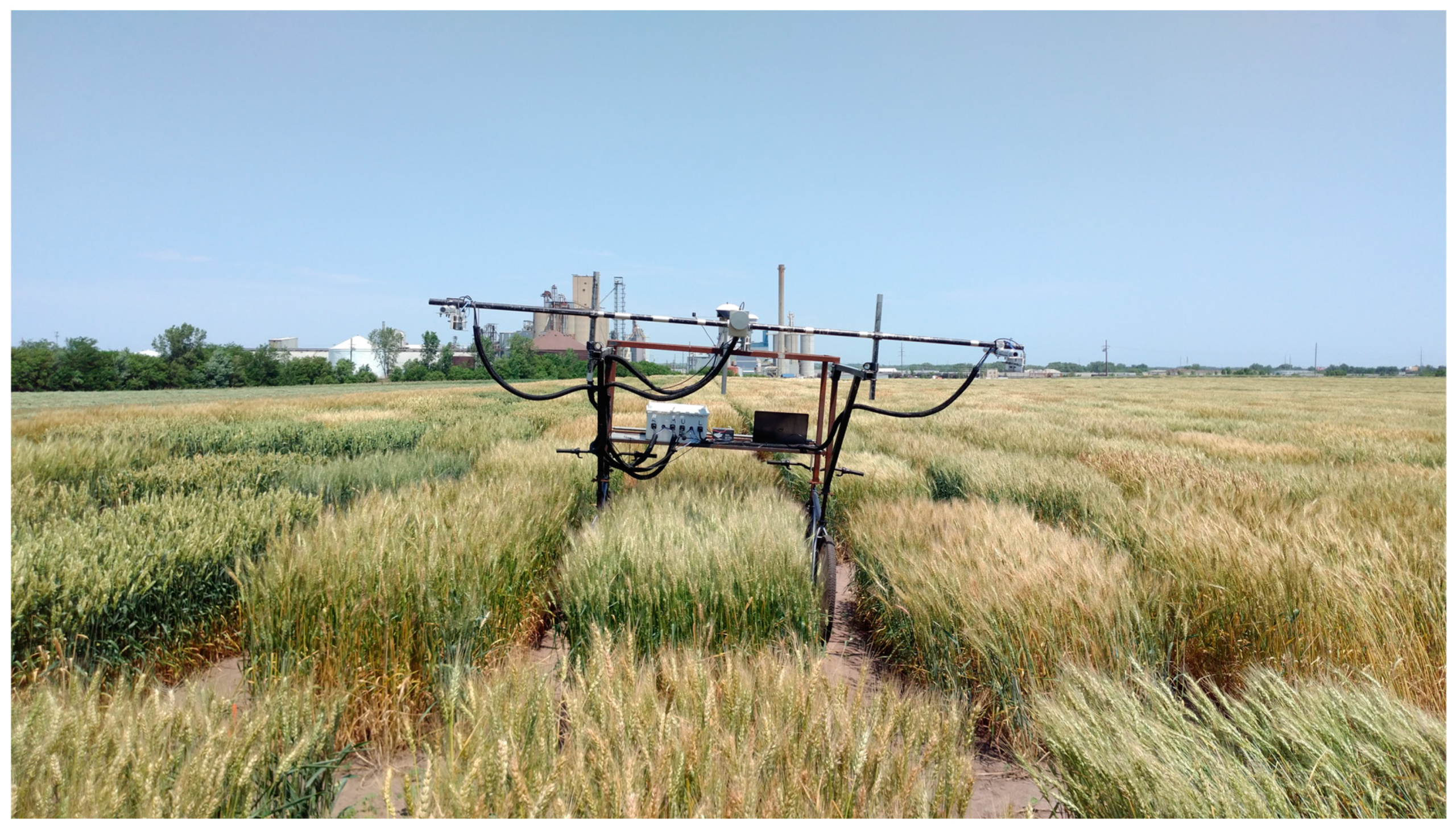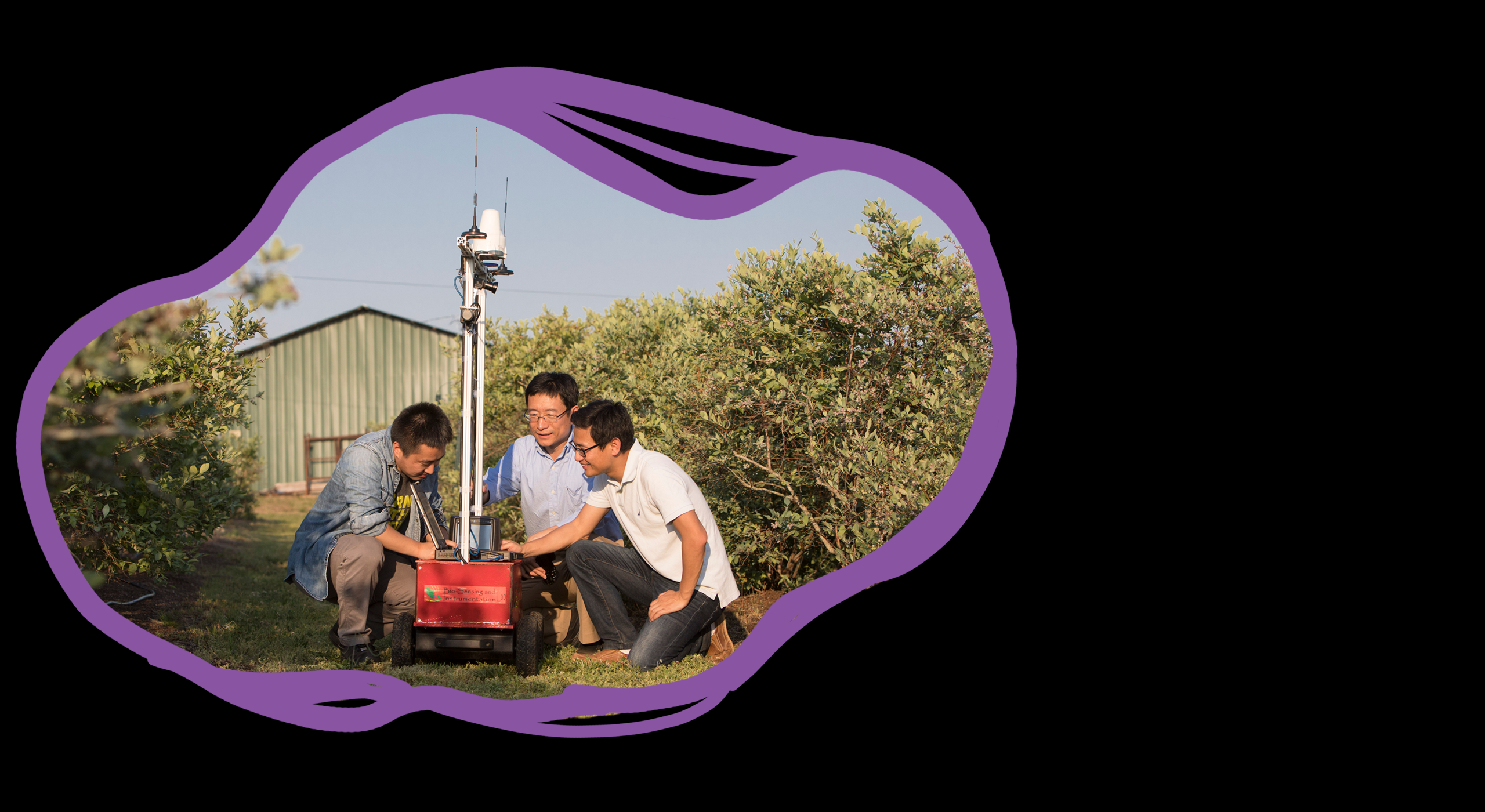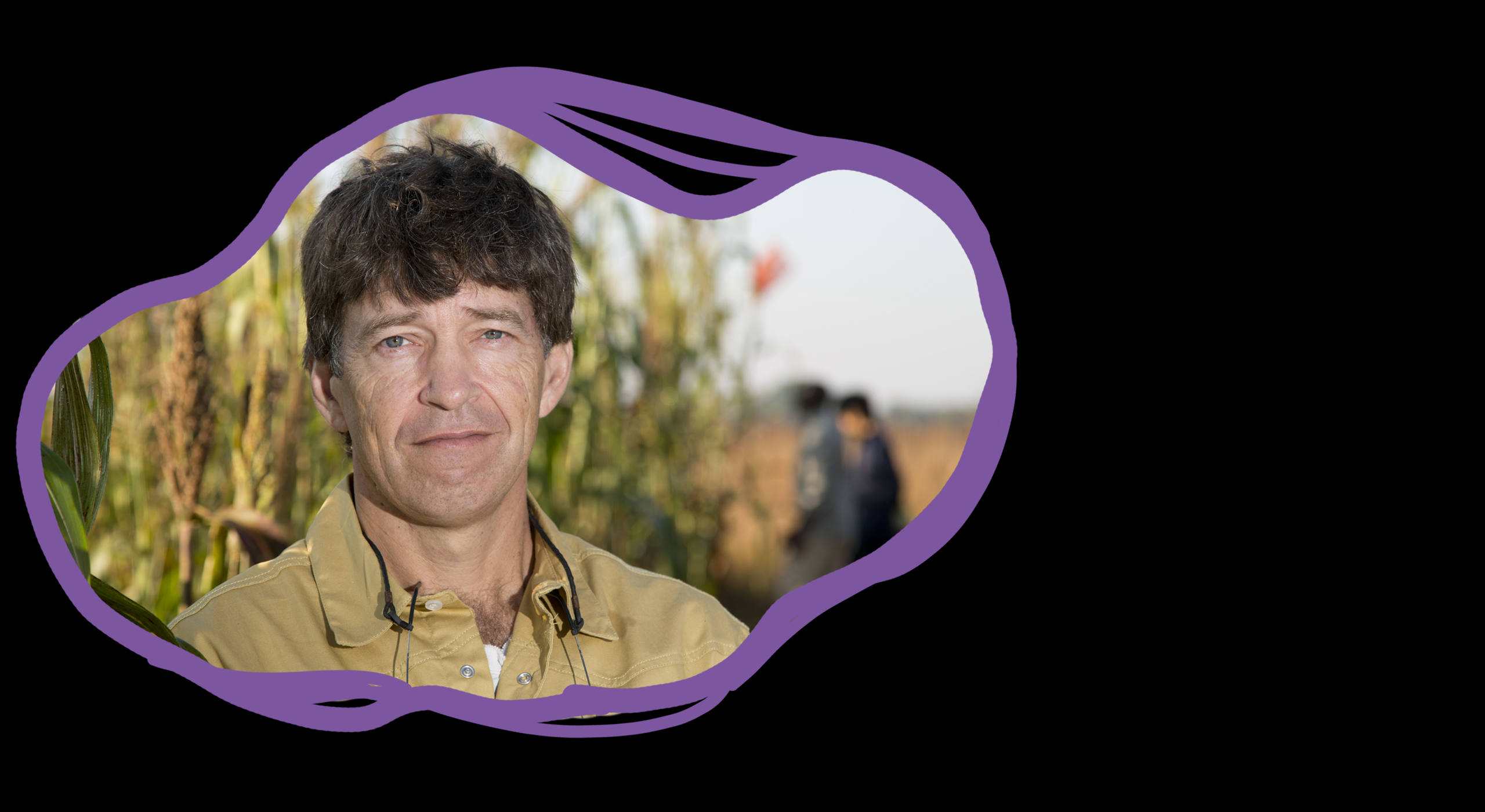Robots in the Field
Andy Paterson and Charlie Li use robotic sensors to efficiently scan crops for selective plant breeding


Since the beginning of agriculture, farmers have chosen to collect the next year’s seeds from the best looking of the current year’s crops.
Seeds from the plants with the healthiest-looking leaves, the most blooms, the deepest root system and the most fruit were collected and saved to improve the next year’s crop.
Over the years, science has refined this process and made it more efficient. Today scientists at the University of Georgia College of Agricultural and Environmental Sciences are partnering with their peers at the UGA College of Engineering to make the process of selecting the best-performing crops even faster by using robots.
In 2018, UGA researchers launched the UGA Phenomics and Plant Robotics Center as a hub for these new collaborations, which use remote-sensing technologies with cutting-edge bioinformatics and plant genetics to help accelerate the path between industry need and new crop varieties.
One of these collaborations is between Andy Paterson, a Regents Professor in CAES and Franklin College of Arts and Sciences, and Charlie Li, professor of electrical and computer engineering.
Paterson and Li have pioneered a technique for mounting remote imaging sensors to all-terrain rovers and unmanned drones to gather millions of points of data on the individual plants in a field. Together these points of data describe the plant’s phenotype — the visible expression of the plant’s genetics.
Phenotyping is traditionally done by teams of research assistants and is very time intensive.
“One of the reasons that breeding proceeds slowly is because phenotyping is laborious,” said Paterson, a molecular plant breeder focused on cotton and sorghum. “In my lab, I’ve been known to have phenotyping parties where we take the whole lab out to the field and we measure and count and weigh and harvest. It might go on for days or weeks. We spend a lot of time measuring plants and measuring plant traits.”
With multispectral, hyperspectral and thermal cameras and light detection and ranging, or LiDAR, the robotic systems can build real-time 3D models of individual plants and slash the time needed to collect phenotype data on a field full of plants.
As the robots scour the fields looking for plant traits and building models, big-data processing programs scour the millions of data points for the patterns that may indicate the overall fitness of one individual plant over another or indicate some standout trait needed in the next round of breeding.
Li has compared the process to the facial recognition system used by Facebook to tag people in photographs.
As Paterson and Li refine their new technology and other researchers develop similar systems, robotics will become a key part of breeding more sustainable and resilient crops, Paterson said.
“The robots offer us not only the means to more efficiently do what we already do, but also the means to gain information that is presently beyond our reach,” he said. “For example, by measuring plant height at weekly intervals instead of just once at the end of the season, we can learn about how different genotypes respond to specific environmental parameters, such as rainfall.”
The acceleration achieved with robotics will be necessary in order to feed the world’s growing population, said Paterson.
“Historically, genetics has been credited for about half of the yield gains that permitted small numbers of farmers and producers to sustain large human populations, for example during the Green Revolution,” Paterson said. “It’s realistic to envision that genetics will need to account for about half of the doubling of agricultural output that will be needed by 2050. This will require roughly doubling historical rates of progress in crop improvement, and more detailed and efficient phenotyping will be essential to accomplishing this.”
The project is supported by a $954,000 grant from the National Robotics Initiative, a program jointly sponsored by the National Science Foundation, the U.S. Department of Agriculture, the U.S. Department of Energy, NASA and the National Institutes of Health. The goal of the National Robotics Initiative is to accelerate the development and use of next-generation robots in the U.S. •
UGA College of Engineering’s Mike Wooten contributed to this story.



